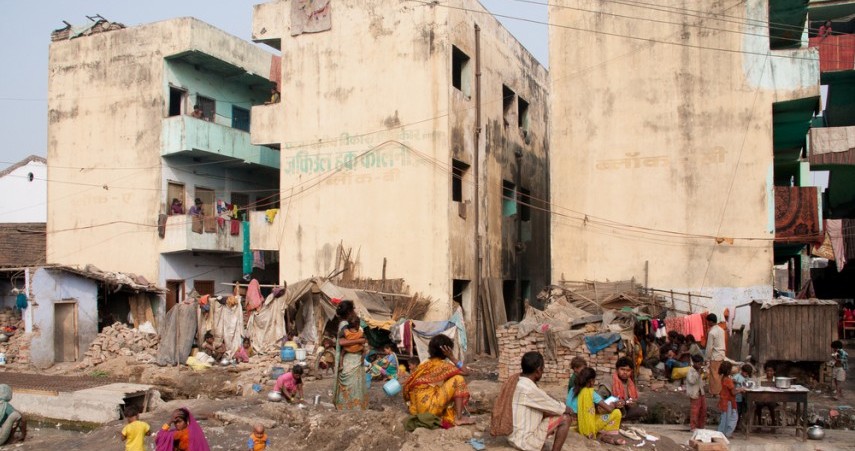Improper Slum Records Root To Illegal Property Transactions

A recent study, undertaken by Duke University and Omidyar Network, revealed that Garden City-Bengaluru has about 2,000 slums, far higher than the government’s projected numbers at 597.
The discrepancy in the government’s official data is worrying given that slums become homes to migrant population belonging to the weaker economic classes. Although illegal, the average sale price of a slum house is Rs 15 lakh herein, suggests the study. The average rent in these unregulated dwellings is Rs 4,467 per month and while 40 per cent of slum inhabitants in Karnataka are on rent, 14 per cent own these homes while 27 per cent have inherited it. Another 16 per cent of the population also comprises of those who have squattered, adding to resource crunch.
To further understand the demographics, 32 per cent of respondents had said that they had lived outside Bengaluru while 51 per cent said that their grandparents hailed from Bengaluru. A whopping 83 per cent said that their parents lived in the city and 40 per cent pointed out that they have been living in the city’s slums for generations.
According to Census 2011, there are only 5.39 per cent slums in Karnataka. Within Karnataka, 206 slums were recorded. A Times of India report suggests that records with the Karnataka Slum Development Board, the Bruhat Bengaluru Mahanagara Palike (BBMP) and the municipal administration are also different. Authorities should not underplay the problem given that the government of India has been working on various poverty alleviation schemes and measures and affordable housing but lack of records and mushrooming shanties add to the problem of unstructured selling and buying of homes as well as unaccounted people who may be deprived of government subsidies etc.
The survey said that less than two per cent of properties in these slums were purchased in one year and depending upon the ‘quality’ of amenities in these shanties, the price could range between Rs 1 lakh to almost Rs 53 lakh. The upper limit could easily be the price that peripheries of big cities and some Tier II and Tier III cities command for an authorised construction. However, due to lack of government records or lack of documentation and formal banking channels, such slums become underrated centres of economy.
There is a dearth of opportunities that would otherwise help these slum dwellers to work towards upward social mobility. The average pay of a slum dweller who has been here for generations is estimated to be Rs 8,000 per month. Worse, there has been no visible change in almost 60 per cent of slums between 2010-2015 which is a grave concern.
Property transactions are also haphazard and unprotected wherein a seller may forgo all his rights over the property in favour of the buyer but in case the slum is notified, the buyer’s right over the property is questionable. Distress sales is also rampant.
Analysts who study implication of property transactions say that by notifying these slums and rehabilitating the inhabitants, the government can secure its coffers because then property buying would mean additional stamp duty. For buyers, legal channels of buying would also secure their wealth.
For this study, satellite imagery had been used and it is said that civic authorities may soon plan to use it to track encroachments across the city. However, it is a long way to go till then.
Elsewhere
According to Census 2011, the highest number of slums were in Andhra Pradesh at 12 per cent while Puducherry recorded 11.58 per cent slums taking the second lead. New Delhi at 10.63 per cent is the third lead. Maharashtra follows at 10.54 per cent.
In India, the top ten states with least number of slums include Kerala, Assam, Himachal Pradesh, Arunachal Pradesh, Jharkhand, Bihar, Goa, Meghalaya, Gujarat and Rajasthan.


